Fieldwork is never boring
by Serena Donadi (ZEN exchange fellow in Virginia)
One of the most exciting days in the field was when we installed cages for an experiment examining the effects of predators (shrimp, fish, crabs) on the seagrass comminity. After spending many days cutting PVC pipes, sewing meshes and gluing parts together, our cages were finally ready! The plan was to go to the experimental site (Goodwin Islands), pound 60 poles into the sediment and attach our cages to the poles with bungees and cable ties so that the currents wouldn’t drag them away. Plus, to make the cages sink to the sea bottom, we planned to put few shovels of sand inside each mesh.
The cages are basically empty cubes (sides of about 0.5m), made by PVC poles, which are enclosed in a mesh bag. Inside the cages, seagrass communities are recreated by adding mesograzers (gastropods and crustaceans such as amphipods and isopods) and seagrass shoots attached to a plastic screen. The aim of the experiment is to keep all predators (fish and crabs) outside and see what happens… Will the populations of grazers increase? How will such an increase affect the algae and seagrass? Do we see evidence for a trophic cascade, where animals at top trophic levels promote plants at lower trophic levels by controlling species at middle levels?
The weather forecast that day was not very optimistic and there was chance of thunderstorms. We decided to give it a try and started loading everything we need on the boat. The boat was literally full! I wish I’d taken a picture. After adding 10 buckets full of sand, lots of poles, coolers with seagrass and other field. I was really afraid we would sink. But our captain for the day, Kathryn, carefully directed us as to how to load the boat to balance the weight and we were safely on our way. Once we arrived at the field site, the bad weather started rumbling and dark clouds were quickly moving in our direction. I have been in Virginia for more than one month now, but I am still surprised by how fast thunderstorms can appear here and how strong they can be. We decided to quickly head towards a sheltered dock nearby and wait for the storm to pass. After one hour we were back in the field.
It’s odd to say after so many days of terrible heat, but the water was chilly! I was glad I had my wetsuit with me. The sea was still quite rough making the fieldwork quite challenging. To be able to attach the cages to the sea bottom, I wore an incredible heavy weight belt. Despite it, the drift of the waves could still make me roll on the bottom as I snorkeled. The water was so murky that I was not able to see what my hands were doing. Sink to the bottom, stretch my legs to avoid rolling, bind the bungee around the cages and secure everything with cable ties.
After a few hours all of us were trembling because of the cold, the tide was rising, and dark clouds began to cover the sky. Finally the last cage was placed and we jumped on the boat. The sea was stormy and Captain Kathryn did an awesome job in bringing us back to the VIMS boat basin where we store the boats. On our way, heavy rain poured from the sky, hurting on our skin and blinding our eyes. I put on my diving mask and thought how ridiculous I should look wearing a mask and a wetsuit outside of the water. Eventually we arrived at the boat basin, tired, hungry and cold.
That night as I lay in my bed and thought about the day, I realized how lucky I am for having this great chance to work with wonderful people in this amazing ecosystem. It was so much fun! Really, it was one of my favorite days so far in Virginia.

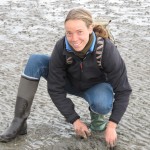
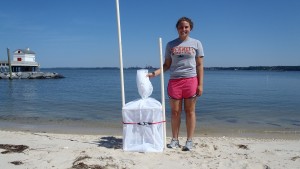
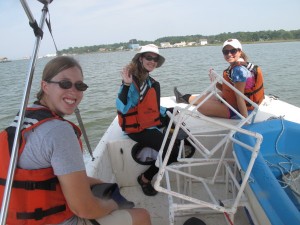
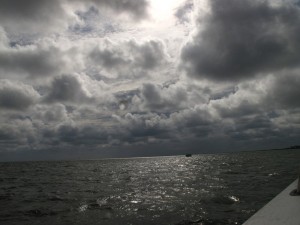
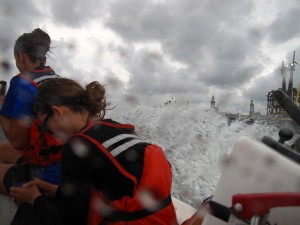

Comments are closed.